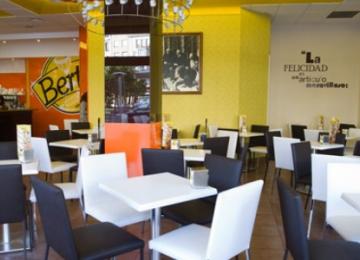Valencian Horchata
Horchata valenciana, the most refreshing and nutritious product
Liquid, frappe or mixed. There are many ways to drink a good glass of horchata. You may have tried it in other places, but you cannot leave Valencia without tasting the real one, the Valencian one. Recommended for its properties, as it is rich in nutrients and vitamins, there is no better drink to refresh yourself and, moreover, it is delicious!
It is made from tigernuts (chufas), a tuber that can only be grown in soils with special characteristics and climatic conditions, which is why it is exclusive to Valencia and has a Denomination of Origin.
Where and what to drink it with
In Valencia there are many places to try it, in almost all the cafeterias or ice-cream parlours they dispense it in the summer months, natural horchata, sweet and very fresh! We recommend you the Horchatería Daniel, one of the most traditional temples of this drink located in Alboraya, but if you can't go there, they also have a terrace in the Mercado de Colón and a shop in San Vicente Mártir street, the tigernut milk to take away is very common for Valencian snacks. Other alternatives are Bertal, which has shops in Plaza de la Reina, San Vicente and Calle Bilbao; the classic Horchatería Santa Catalina; and the Mon Orxata trolleys, which you will find in the most emblematic places in the city.
Another important piece of information is what to drink this exquisite drink with. In Valencia, the most typical and appropriate thing to do is to accompany it with fartons, a kind of elongated handmade pastry covered with a layer of sugar. They are very good, ask for them and try to dip them in it.
Its history and legend...
Tigernuts were already highly prized in ancient Egypt, from where they spread to North Africa and their cultivation was introduced to this Mediterranean area by the Islamic expansion. There are writings that testify that already in the 13th century a drink called 'llet de xufes' was consumed, which is probably the origin of the tigernut milk produced today.
It is said that, although this fact is not documented, the name of this drink was given by James I, who, when he tasted a glass of this drink offered to him by a young woman, said: " Qué és això? (What is this?), and she replied: "És llet" (It's milk), and surprised by its sweet taste, he said: "Això no és llet, això és or, xata" (This is not milk, this is gold, my dear).
Tigernut cultivation and its properties
Nowadays the tigernut is cultivated in 16 villages of the Valencian l'Horta Nord Region. Chufas are planted between April and May and harvested between November and January. Once the harvest is over, the crop is washed and then it is put into "drying chambers" so that the product has all its qualities.
Tigernuts are considered by many to be a "superfood", as several medical studies reflect the benefits of consuming them for the body. It has digestive properties due to its starch and amino acid content; and it is rich in minerals such as phosphorus, magnesium, potassium and iron. Other components are unsaturated fats and proteins, a combination that makes the tigernut milk, and therefore the tigernut milk, a food that provides a lot of vitality and energy.
Recommended related visits
If you want to know in depth the area where the tigernut is cultivated, do not hesitate to hire a guided visit to the orchard, to do a bike tour at your own pace or to visit the Horchata Museum, in the Alquería El Magistre. These are other curious ways of approaching this rich, healthy and refreshing drink.



